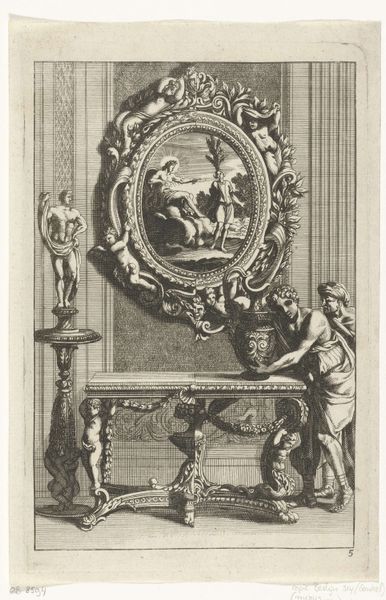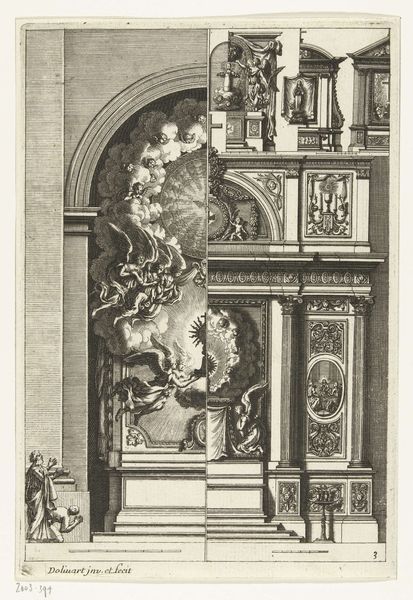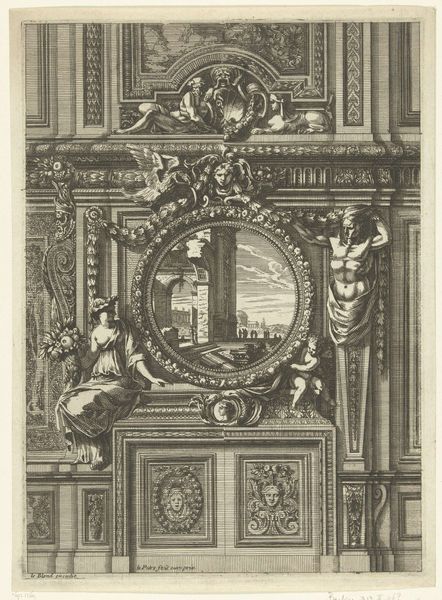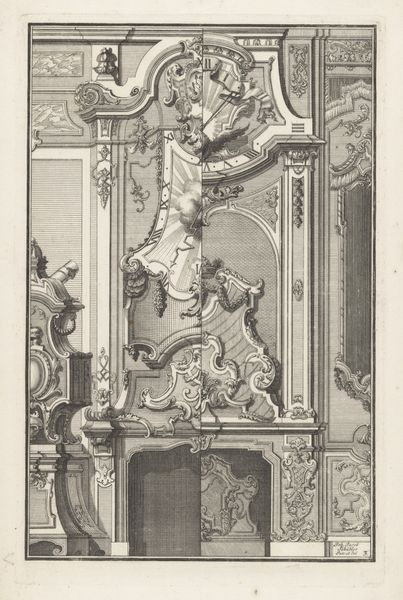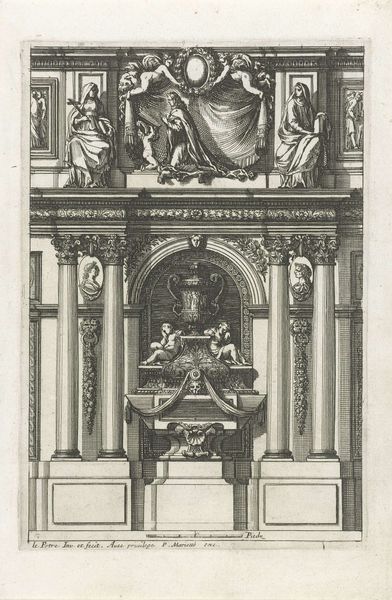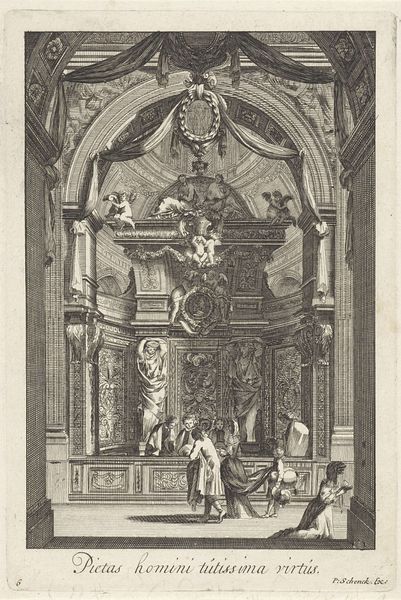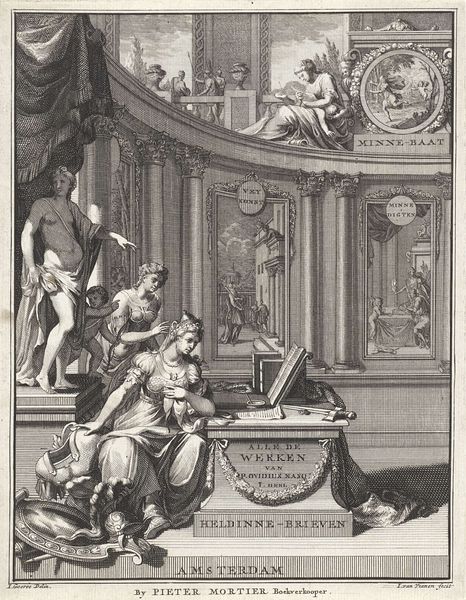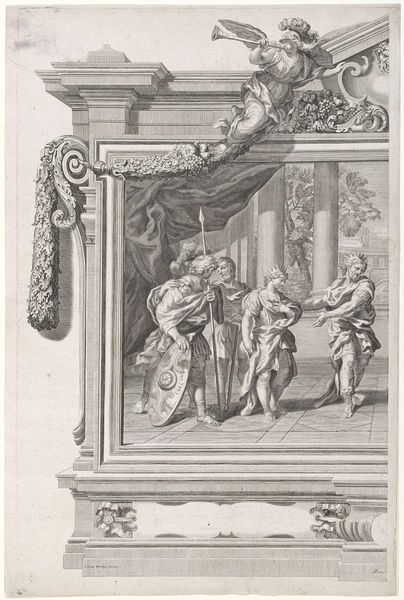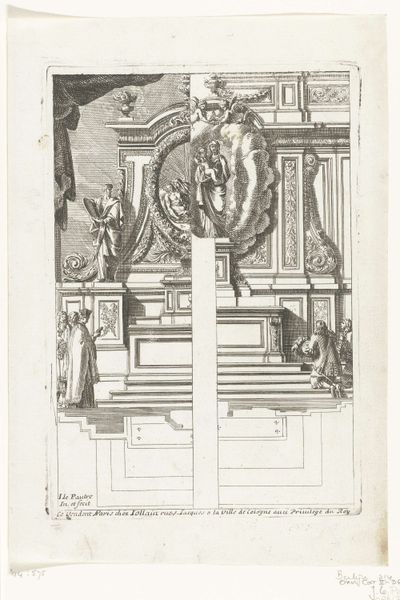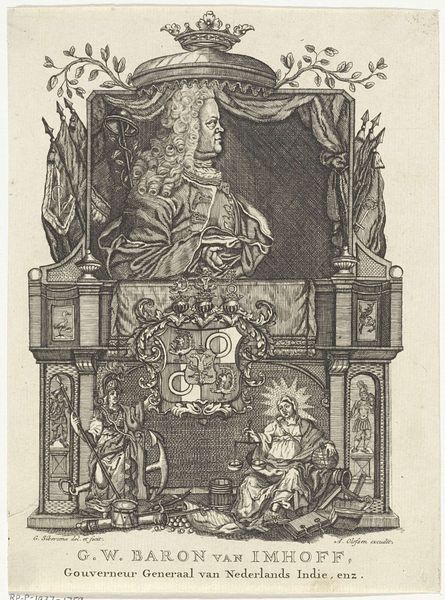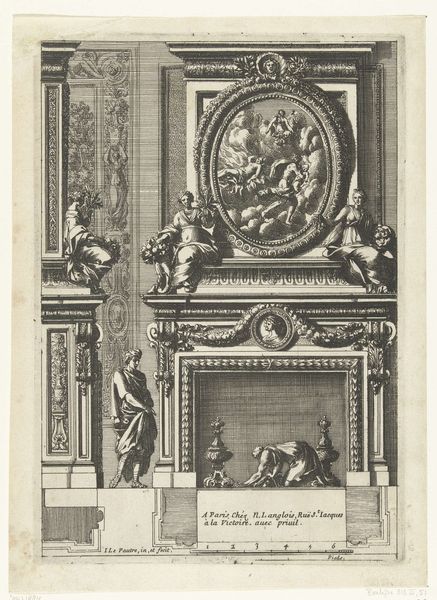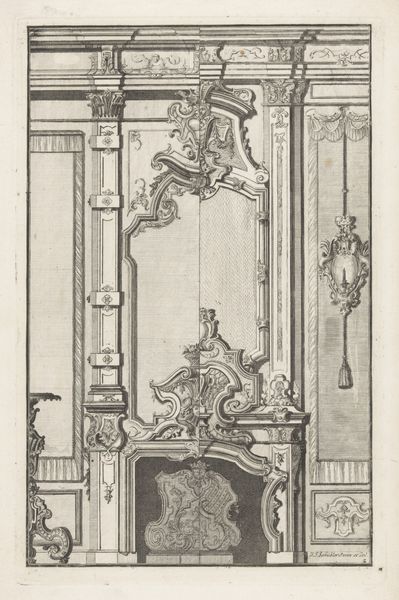
drawing, print, ink, engraving
#
drawing
#
baroque
# print
#
pen illustration
#
old engraving style
#
caricature
#
form
#
ink
#
pen-ink sketch
#
line
#
sketchbook drawing
#
history-painting
#
engraving
Dimensions: height 224 mm, width 151 mm
Copyright: Rijks Museum: Open Domain
Editor: So, this is Jean Lepautre’s "Achthoekige spiegel," or "Octagonal Mirror," made sometime between 1660 and 1670. It's an engraving, and I'm struck by how staged and ornamental the scene feels. It’s like a peek into a very specific kind of interior. What social narratives do you think it reflects? Curator: Absolutely. It presents a fascinating glimpse into the Baroque aesthetic and the role of display within that period. We need to consider not just the beauty of the object itself, but the societal values that are embedded in its presentation. The mirror, the cherubs, the idealized figures—how do these elements reinforce or perhaps even subvert the power structures of the time? Editor: Subvert? I'm not sure I see that. It all seems very…conformist. Curator: Think about it this way: who had access to such ornate objects and spaces? What does that exclusivity communicate about class, gender, and identity in 17th-century Europe? Is Lepautre simply showcasing wealth, or is he making a commentary on the performance of identity through material possessions? Consider, too, the labor required to produce these objects and maintain these spaces, often rendered invisible in such images. Editor: So, you're saying that even in something that seems purely decorative, there’s a dialogue about power and access being visualized? Curator: Precisely. Art doesn’t exist in a vacuum. Lepautre's engraving is both a product of its time and a reflection of its social landscape. It encourages us to question who is included and who is excluded from this constructed reality, and what role luxury played in Baroque-era society. Editor: That makes me look at the details in a totally new way. It’s less about the mirror and more about who gets to look in it, and the context it is in. Curator: Exactly. By examining these seemingly simple images, we can unravel complex conversations about historical and social power dynamics, and that is what is useful about the work. Editor: I'll definitely keep that in mind moving forward. Thanks!
Comments
No comments
Be the first to comment and join the conversation on the ultimate creative platform.

